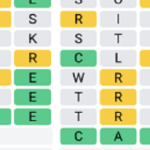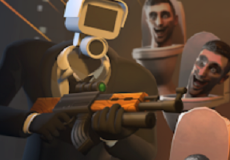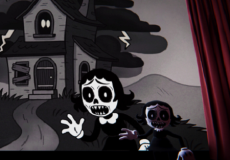
Manivore
Advertisement
Manivore is a psychological horror game that places players in the role of an investigator drawn into a case that quickly spirals beyond logic. At first glance, the crimes seem like acts of random brutality, but as more scenes are discovered, a pattern begins to emerge—calculated, ritualistic, and deliberately left for someone to find. The antagonist, known only as Manivore, does not just kill. He reconstructs his crimes into grotesque compositions, hiding meaning in every detail. As the player follows the trail, it becomes clear that this is not just a chase—it’s a confrontation designed from the start.
Advertisement
Similiar games
Observation and Evidence Gathering
The gameplay relies on close visual analysis and environmental interaction. Players use a special camera to reveal hidden clues that the naked eye cannot detect. Blood spatter patterns, distorted reflections, and concealed objects are only visible through this lens, making it an essential part of solving each scene. The game demands patience and attention, as many crucial hints are buried under layers of visual noise or disguised within the environment.
Key features shaping the gameplay:
- Crime scene investigation with photo-based mechanics
- Interactive puzzles that require deduction and sequencing
- Hidden layers of story through symbols and artifacts
- Real-time sound cues that guide or mislead
- Emotional intensity through voice logs and fragmented memories
Psychological Tension and Puzzle Depth
Each level in Manivore functions as both a physical space and a psychological map. The player must navigate disorienting layouts while deciphering the killer’s intent. Some puzzles involve arranging objects into precise patterns, while others focus on interpreting cryptic messages left behind. As progress is made, the environments begin to shift, reflecting the unstable mental state of both the investigator and the subject of the investigation. This blending of the physical and mental creates a sense of instability that adds to the tension.
Visual Atmosphere and Sound Design
The game’s visual design blends hyper-realistic textures with surreal imagery, giving each crime scene an unnatural and unsettling feel. Lighting is used not just for mood but as a gameplay element, revealing paths or distorting familiar locations. The audio design reinforces the unease, with ambient noises, sharp distortions, and distant voices enhancing the sense of dread. The line between hallucination and reality becomes unclear as the killer seems to manipulate more than just the environment—he begins to influence the player’s perception.
A Descent into Control and Isolation
What sets Manivore apart is its deliberate pacing and narrative focus on control. The killer leaves traces not out of arrogance but as part of a design meant to engage the investigator on his terms. As the player gathers more information, they begin to realize that their role may not be what it first seemed. The game challenges the player not just to survive but to understand—and perhaps even predict—the killer’s mind. In doing so, it explores the thin boundary between the observer and the observed, turning investigation into obsession.
Discuss Manivore
























